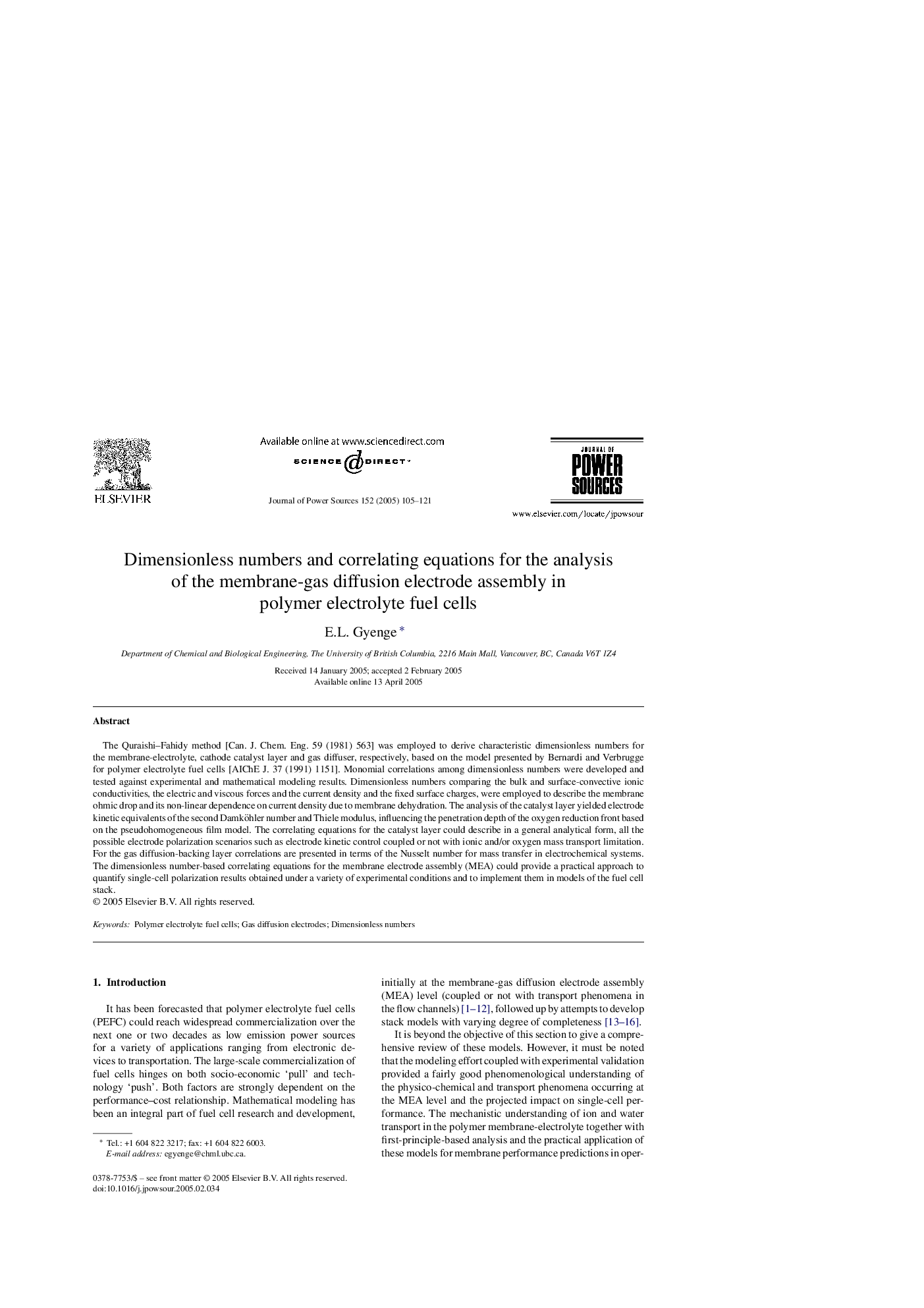| Article ID | Journal | Published Year | Pages | File Type |
|---|---|---|---|---|
| 9760113 | Journal of Power Sources | 2005 | 17 Pages |
Abstract
The Quraishi-Fahidy method [Can. J. Chem. Eng. 59 (1981) 563] was employed to derive characteristic dimensionless numbers for the membrane-electrolyte, cathode catalyst layer and gas diffuser, respectively, based on the model presented by Bernardi and Verbrugge for polymer electrolyte fuel cells [AIChE J. 37 (1991) 1151]. Monomial correlations among dimensionless numbers were developed and tested against experimental and mathematical modeling results. Dimensionless numbers comparing the bulk and surface-convective ionic conductivities, the electric and viscous forces and the current density and the fixed surface charges, were employed to describe the membrane ohmic drop and its non-linear dependence on current density due to membrane dehydration. The analysis of the catalyst layer yielded electrode kinetic equivalents of the second Damköhler number and Thiele modulus, influencing the penetration depth of the oxygen reduction front based on the pseudohomogeneous film model. The correlating equations for the catalyst layer could describe in a general analytical form, all the possible electrode polarization scenarios such as electrode kinetic control coupled or not with ionic and/or oxygen mass transport limitation. For the gas diffusion-backing layer correlations are presented in terms of the Nusselt number for mass transfer in electrochemical systems. The dimensionless number-based correlating equations for the membrane electrode assembly (MEA) could provide a practical approach to quantify single-cell polarization results obtained under a variety of experimental conditions and to implement them in models of the fuel cell stack.
Related Topics
Physical Sciences and Engineering
Chemistry
Electrochemistry
Authors
E.L. Gyenge,
